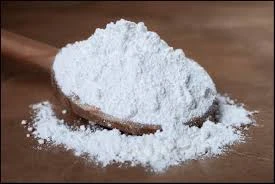
The Role of Sulfur Dioxide in Food Preservation and Safety Standards
The Role of Sulfur Dioxide as a Preservative
Sulfur dioxide (SO₂) has long been recognized for its preservative qualities, particularly in the food and beverage industry. It is a colorless gas with a distinctive pungent odor that has been used for centuries to prevent spoilage and maintain the quality of various products. This article explores the mechanisms by which sulfur dioxide acts as a preservative, its applications, and the regulations surrounding its use.
Mechanism of Action
The preservative efficacy of sulfur dioxide can be attributed to its antioxidant and antimicrobial properties. As an antioxidant, sulfur dioxide prevents the oxidation of food, which can lead to rancidity, color changes, and loss of flavor. Oxidation is a natural reaction that occurs when food is exposed to air, resulting in undesirable changes in food quality. Sulfur dioxide effectively inhibits these reactions, thus extending the shelf life of food products.
In addition to its antioxidant properties, sulfur dioxide possesses significant antimicrobial capabilities. It inhibits the growth of bacteria, molds, and yeasts, which are common causes of food spoilage. By creating an unfavorable environment for these microorganisms, sulfur dioxide helps preserve the texture, taste, and overall quality of food. This dual action—preventing both oxidation and microbial growth—makes sulfur dioxide an effective preservative for a wide range of products.
Applications in Food and Beverages
Sulfur dioxide is predominantly used in the preservation of dried fruits, wine, and certain vegetables. In the dried fruit industry, it is commonly used to maintain color and prevent browning. For example, sulfured dried apricots retain their vibrant orange hue, making them more appealing to consumers. Similarly, in winemaking, sulfur dioxide plays a crucial role in preventing spoilage and oxidation, helping to maintain the wine's characteristic flavors.
sulfur dioxide as a preservative

Another application of sulfur dioxide is in the preservation of various canned and frozen foods. In vegetables, sulfur dioxide is used to help retain their color and texture during processing. However, its use in fresh produce is limited due to potential health concerns and consumer preferences for less processed foods.
Regulatory Framework and Safety
The use of sulfur dioxide as a preservative has been the subject of extensive research and regulatory scrutiny. Regulatory bodies, such as the Food and Drug Administration (FDA) and the European Food Safety Authority (EFSA), have established guidelines regarding the permissible levels of sulfur dioxide in food products, considering both efficacy and safety.
While sulfur dioxide is generally recognized as safe when used within established limits, it can cause adverse reactions in sensitive individuals, particularly those with asthma. Symptoms may include respiratory issues, allergic reactions, and gastrointestinal disturbances. As a result, food products containing sulfur dioxide must be clearly labeled, allowing consumers to make informed choices.
Conclusion
In summary, sulfur dioxide serves as a vital preservative in the food and beverage industry, leveraging its antioxidant and antimicrobial properties to enhance product longevity and quality. From dried fruits to wines, its applications are widespread, helping to ensure that food products remain safe and appealing to consumers. However, with its usage comes the necessity for regulation and consumer awareness, particularly regarding potential health risks. As the food industry continues to evolve, the role of sulfur dioxide will likely be reassessed in light of health trends and innovative preservation methods, but for now, it remains a key player in food preservation.
-
Nitrile Rubber Honoring Strict Production StandardsNewsAug.22,2025
-
Aspartame Ingredients Honoring Food Safety ValuesNewsAug.22,2025
-
Fertilizer for Balanced Plant NutritionNewsAug.22,2025
-
Cyanide Gold Processing with High Purity AdditivesNewsAug.22,2025
-
Formic Acid in Textile Dyeing ApplicationsNewsAug.22,2025
-
Aluminum Hydroxide Gel in Skincare ProductsNewsAug.22,2025
-
Regulatory Compliance for Global Mining Chemicals UseNewsAug.12,2025
Hebei Tenger Chemical Technology Co., Ltd. focuses on the chemical industry and is committed to the export service of chemical raw materials.
-

view more DiethanolisopropanolamineIn the ever-growing field of chemical solutions, diethanolisopropanolamine (DEIPA) stands out as a versatile and important compound. Due to its unique chemical structure and properties, DEIPA is of interest to various industries including construction, personal care, and agriculture. -

view more TriisopropanolamineTriisopropanolamine (TIPA) alkanol amine substance, is a kind of alcohol amine compound with amino and alcohol hydroxyl, and because of its molecules contains both amino and hydroxyl. -

view more Tetramethyl Thiuram DisulfideTetramethyl thiuram disulfide, also known as TMTD, is a white to light-yellow powder with a distinct sulfur-like odor. It is soluble in organic solvents such as benzene, acetone, and ethyl acetate, making it highly versatile for use in different formulations. TMTD is known for its excellent vulcanization acceleration properties, which makes it a key ingredient in the production of rubber products. Additionally, it acts as an effective fungicide and bactericide, making it valuable in agricultural applications. Its high purity and stability ensure consistent performance, making it a preferred choice for manufacturers across various industries.





